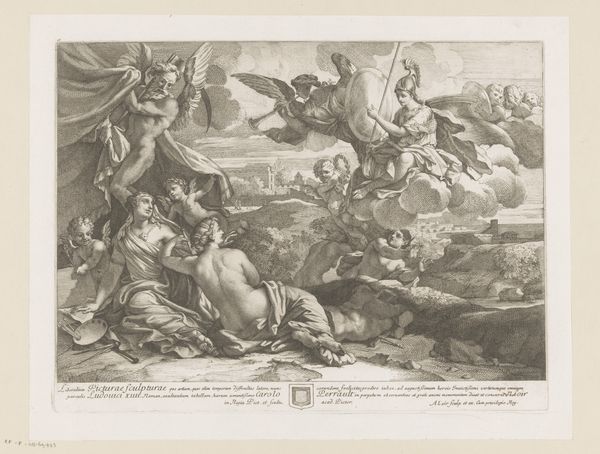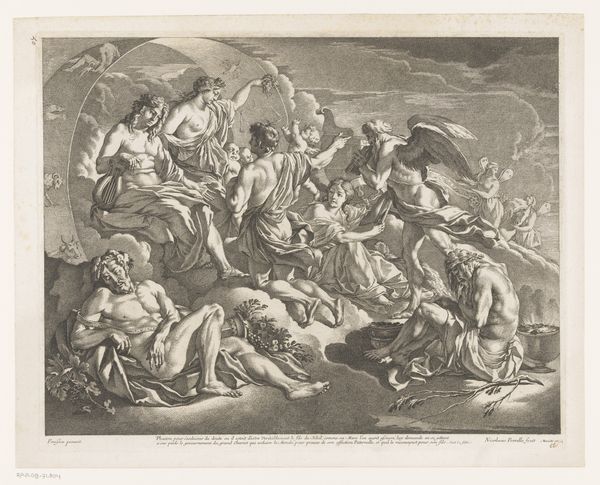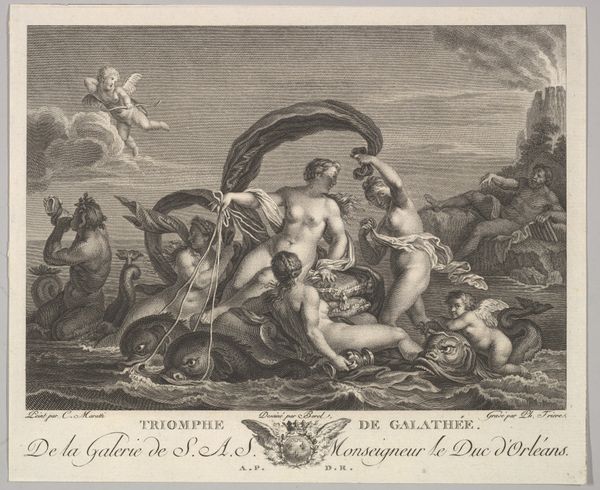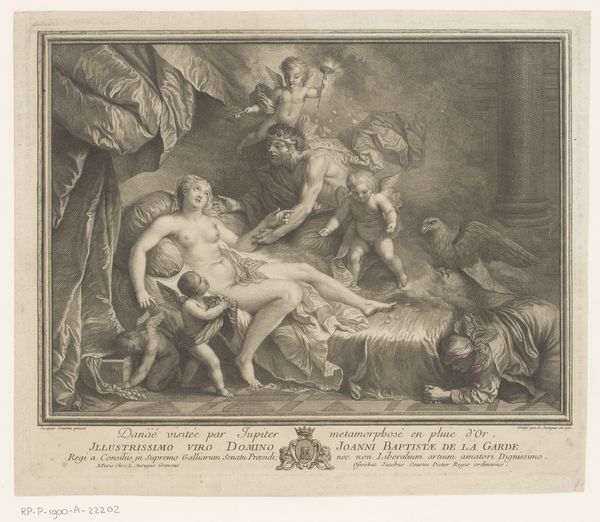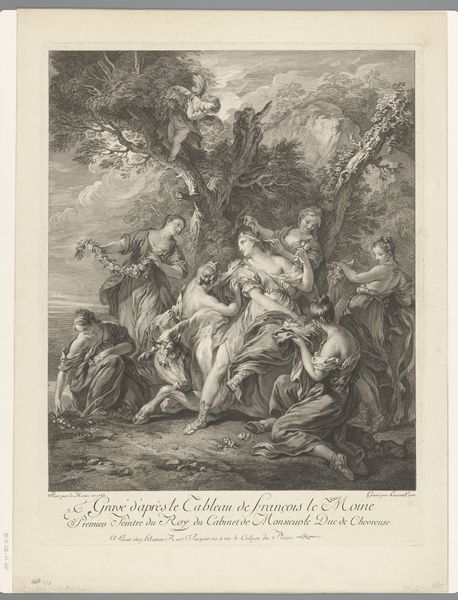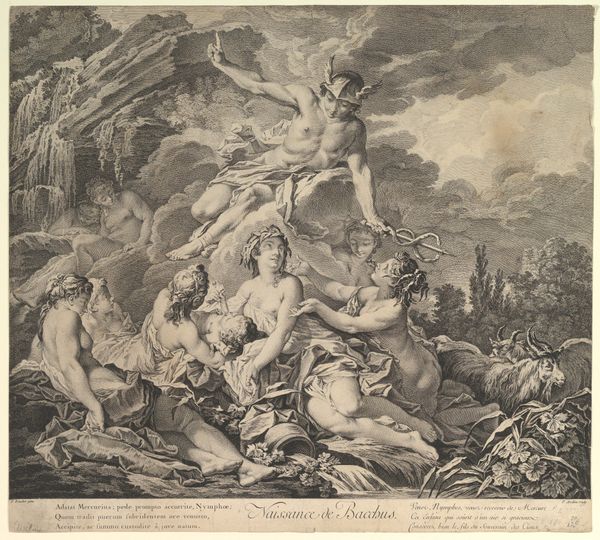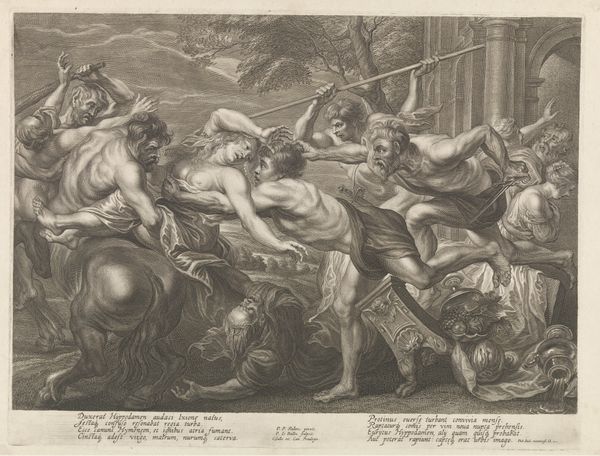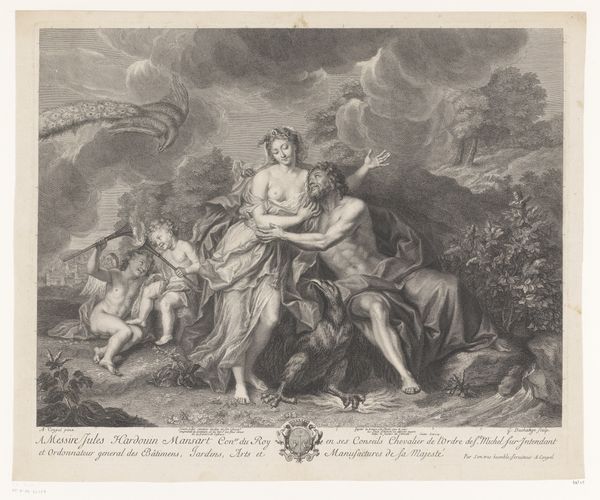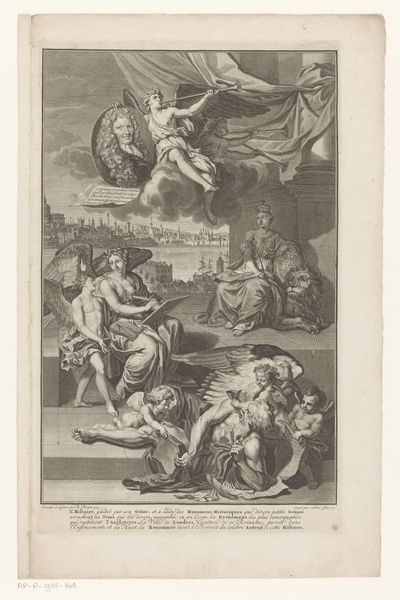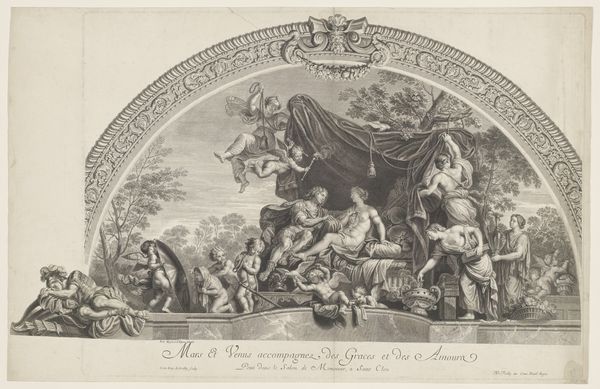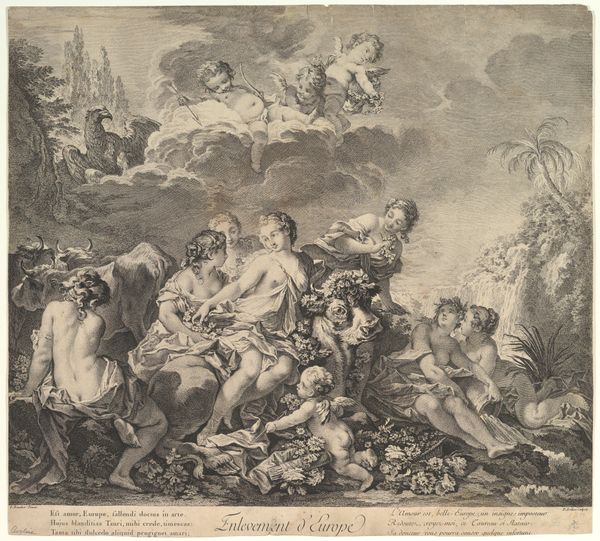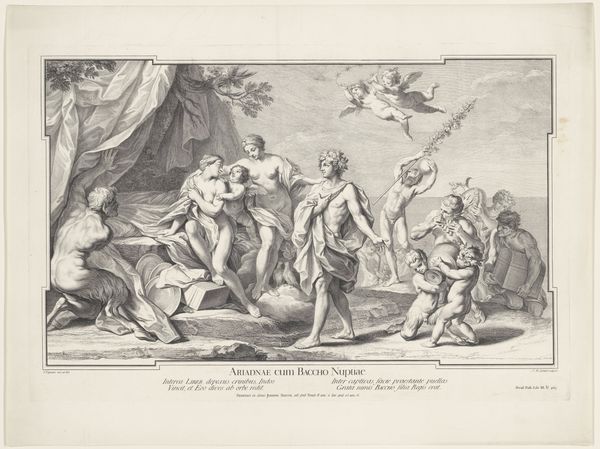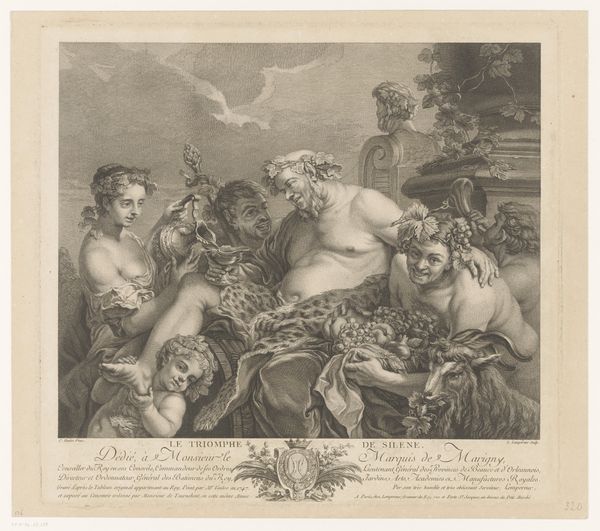
Dimensions: height 533 mm, width 674 mm
Copyright: Rijks Museum: Open Domain
Curator: Looking at this engraving, created around 1782 by Benoît Louis Henriquez, I'm struck by how dramatic the interplay of light and shadow feels for a piece using graphite and engraving. It’s called "Minerva beschermt de Vruchtbaarheid tegen Mars" or "Minerva Protecting Fertility from Mars." What are your first impressions? Editor: My first thought? Intense. Almost claustrophobic, with so many figures crammed into the composition. I feel this tension between the darkness closing in from the left and the brighter, more defined figures on the right where Mars stands, stopped in his tracks. It’s like watching a play unfold under a single spotlight. Curator: Yes, exactly! The composition is incredibly active, a swirling Baroque dance. Note how Minerva, armed, blocks Mars, the god of war, from a central grouping where a woman nurses a child, surrounded by others who represent fertility and abundance. The linear precision, which is beautiful, defines every fold of fabric and ripple of muscle. There’s also the strong contrast. I see darkness on the left and Minerva on the right pushing him away! Editor: Semiotically, we have a fascinating opposition at play. The dark, overgrown landscape contrasted against a more classical order, where the architectural elements—even in their ruined state—suggest an effort at creating order that stands behind Mars. On one side is fertility and the other is barren ruin as he exits, defeated! The emotional undercurrent for me is protective love against aggression. Curator: Precisely! There’s something about the idealized nudes as well. In Baroque allegory they aren't merely physical bodies; they’re embodying virtues, the protection of domesticity, the power of life. Mars with his sword and shield versus the fertile embrace... the contrast is clear, but somehow still makes you want to protect what is left to ruin. Editor: And I find myself wondering, looking at this tableau of defense, whether Henriquez aimed to simply illustrate this moral or sought to offer social commentary during that period when revolution felt on the horizon, with the inscription for the Queen of France seeming a direct act to offer dedication during such a politically tumultuous time. It might simply be what is there though! Minerva steps to defend Fertility! Curator: What an interesting thought! I feel though regardless, there's a lot to discover from Henriquez and that act that makes for great study even today! Editor: Indeed. Perhaps with a bit of study and looking you might be closer to understanding this piece!
Comments
No comments
Be the first to comment and join the conversation on the ultimate creative platform.
